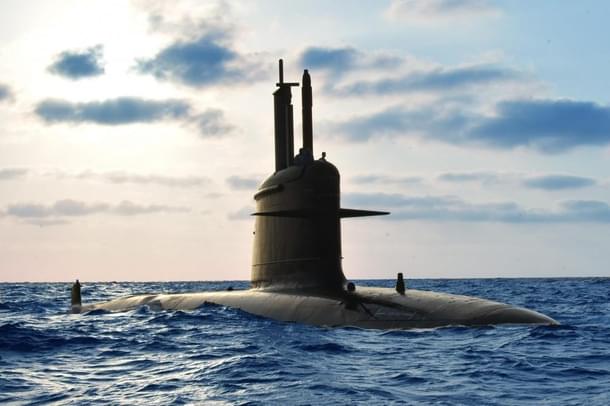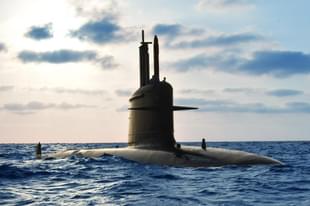News Brief
Explained: How DRDO’s AIP System Will Make India’s Submarines More Stealthy, Help Them Stay Underwater For Longer Periods
Swarajya Staff
Mar 09, 2021, 03:57 PM | Updated Mar 10, 2021, 11:05 AM IST
Save & read from anywhere!
Bookmark stories for easy access on any device or the Swarajya app.


The Air Independent Propulsion (AIP) system being developed by the Defence Research and Development Organisation (DRDO) has crossed a major milestone, the agency has said in a statement issued earlier today.
The system, critical for increasing the underwater endurance of conventional diesel-electric submarines, was proven with the successful test of a land-based prototype on 8 March, the agency said, adding that the plant was operated in “endurance mode and max power mode as per user requirements”.
AIP, DRDO says, has a “force multiplier effect on the lethality of a diesel-electric submarine as it enhances the submerged endurance of the boat several fold”.
AIP system gives a submarine the ability to remain submerged underwater, away from enemy sensors, for a long time without surfacing.
A diesel-electric boat not equipped with an AIP has to snorkel frequently to recharge its batteries which power its propellers and other equipment.
The process of snorkeling involves travelling just below the surface of the water with the submarine’s periscope and generator exhaust pipe above the surface. Submarines have to rise to periscope depth and extend the snort mast above the water line — every day or two in some cases — so as to ingest air needed for running noisy diesel generators (which require atmospheric air) to charge their batteries.
Snorkeling significantly increases the risk of detection.
Radars on modern anti-submarine warfare platforms, such as the Telephonics’ AN/APS-153(V), which will equip the MH-60R helos being acquired by the Indian Navy to detect Chinese boats in the Indian Ocean, can easily detect periscope and exhaust pipes, taking away the element of surprise critical for submarines.
An AIP system reduces the need for snorkeling by enabling it to generate electricity for charging its batteries while completely submerged.
As a result, it improves a submarine’s ability to remain undetected.
Most common AIP systems installed on submarines use liquid or compressed oxygen or hydrogen fuel cells to reduce the need for external sources.
DRDO’s AIP is based on Phosphoric Acid Fuel Cell or PAFC technology, which offers relatively longer life and more efficiency, which makes it cost-effective. It is being developed by DRDO’s Naval Materials Research Laboratory at Ambernath in Maharashtra with support from Larsen and Toubro and Thermax.
India’s Scorpene-class submarines are likely to be fitted with an indigenous AIP system when they go for their first refit in a few years from now.
Two submarines of this class — INS Kalvari and INS Khanderi — are already in service with the Navy. The fourth of the class — INS Vela — is currently undergoing trials at sea, and will be inducted this year. The fifth boat of the class, INS Vagir, was launched in November 2020 and will be commissioned in 2022.
The sixth, named ‘Vagsheer’ after a Vela-class diesel-electric submarine of the Indian Navy commissioned in 1973, is currently under construction.
Pakistan, which already has a few AIP-equipped submarines, will get at least eight more AIP-equipped submarines from China over the next few years.





